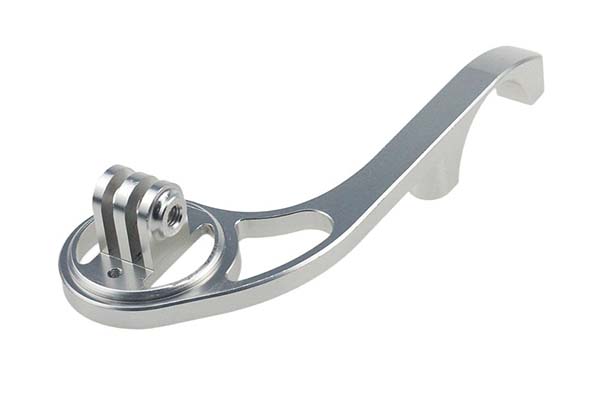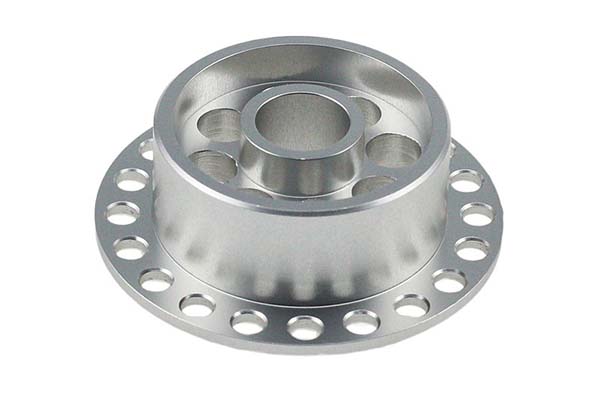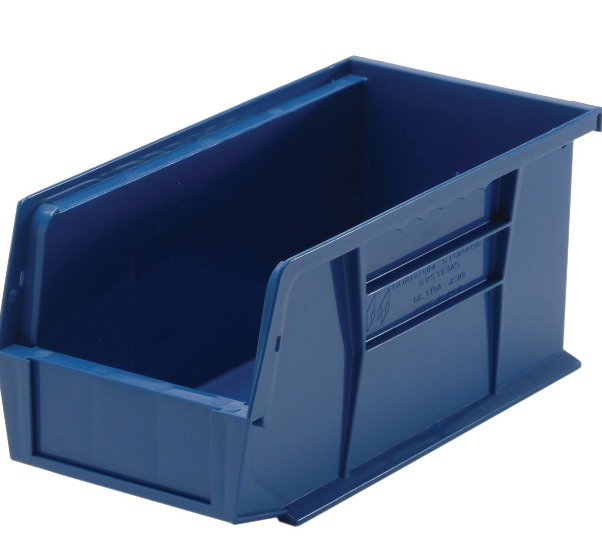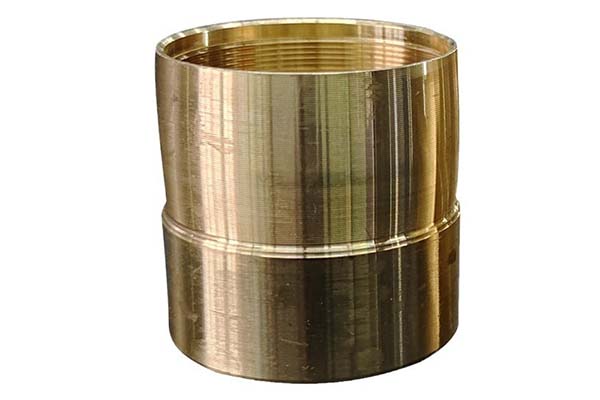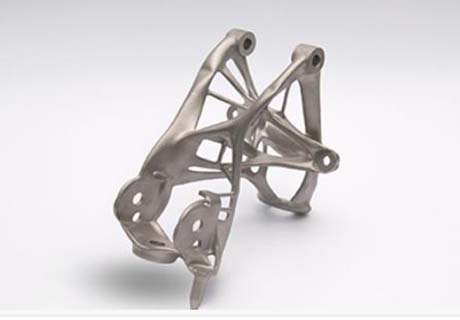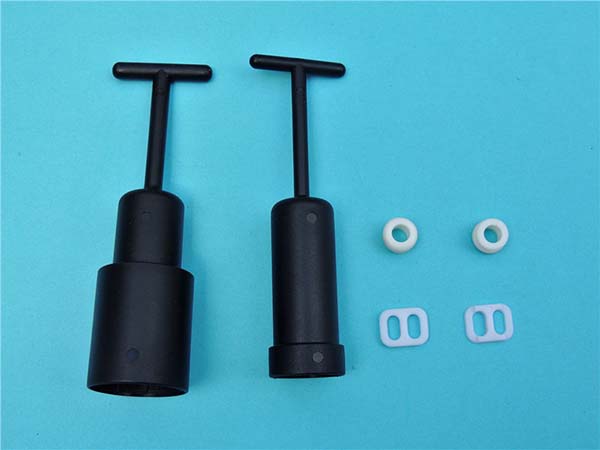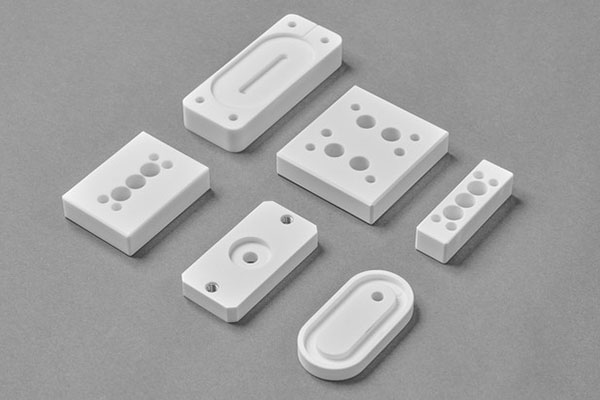Grade 1 (TA1) titanium, as an unalloyed titanium grade, is widely used in industries such as chemical processing, medical, and architecture due to its excellent corrosion resistance, formability, and biocompatibility. However, machining TA1 comes with its own set of challenges, from managing its unique properties to ensuring precise surface finishes and quality control. This article will explore the ins and outs of CNC machining Grade 1 (TA1) titanium, providing valuable insights and solutions to help manufacturers achieve optimal results.
CNC Machining Fundamentals for Grade 1 (TA1) Titanium
TA1 Titanium Properties and Machinability
TA1 titanium properties include a low tensile strength (around 240 MPa) compared to alloyed titanium grades, making it a low-strength titanium option. Its chemical composition is primarily titanium (99.5% minimum), with trace amounts of elements like oxygen, iron, and carbon. This unalloyed nature gives TA1 excellent corrosion resistance, especially in oxidizing environments, but also affects its machinability.
Grade 1 titanium machinability is generally better than that of many alloyed titanium grades, such as Ti-6Al-4V. However, it has its own challenges. Being a soft titanium, it can be prone to work hardening if not machined properly. A study comparing TA1 vs Ti-6Al-4V machinability found that TA1 requires lower cutting forces (approximately 20-30% less) but is more susceptible to chip adhesion and work hardening during prolonged cutting.
Work-Hardening Prevention and Soft Titanium CNC Tips
Work hardening in TA1 can lead to increased cutting forces, tool wear, and poor surface quality. To prevent this, several soft titanium CNC tips can be employed. First, maintaining a consistent cutting action is crucial. Interrupted cuts should be minimized as they can cause localized work hardening. Second, using sharp cutting tools reduces the amount of plastic deformation in the material, which helps in work-hardening TA1 prevention. Additionally, proper chip evacuation prevents chips from rubbing against the workpiece surface, which can also induce work hardening.
Tooling & Cutting Parameters for TA1
Choosing the Right Tooling
When it comes to tooling for TA1, the choice between carbide vs HSS for TA1 is an important one. Carbide tools are generally preferred due to their higher hardness and wear resistance. They can withstand the cutting forces and heat generated during machining better than High-Speed Steel (HSS) tools. A test showed that carbide tools had a 50% longer tool life than HSS tools when machining TA1 under the same conditions.
Sharp cutting edges TA1 are essential. Dull edges can cause excessive plastic deformation and work hardening. Tools with polished flutes promote better chip evacuation, reducing the risk of chip welding and improving surface finish.
Cutting Parameters
- Cutting Speed: For TA1, higher cutting speeds are feasible compared to some alloyed grades. High-speed machining Grade 1 titanium can be achieved with cutting speeds in the range of 100-200 m/min for milling operations. This helps in reducing the contact time between the tool and the workpiece, minimizing work hardening.
- Feed Rate: The feed rate TA1 turning typically ranges from 0.15-0.3 mm/rev. A moderate feed rate ensures efficient material removal without causing excessive tool pressure. For milling, the feed rate can be adjusted based on the tool diameter and the desired surface finish.
- Depth of Cut: The depth of cut TA1 milling is usually between 0.5-2 mm. A shallower depth of cut can help in reducing cutting forces and heat generation, which is beneficial for maintaining tool life and preventing work hardening.
Tool Life Optimization
Tool life TA1 titanium can be optimized by selecting the right tooling and cutting parameters. Using carbide tools with sharp edges and polished flutes, along with appropriate cutting speeds and feed rates, can significantly extend tool life. For example, in a production run of TA1 components, using the recommended parameters increased tool life by 40% compared to using suboptimal settings.
Coolant, Chip Control & Heat Management for TA1
Coolant Strategies for TA1 Machining
Flood coolant TA1 machining is a commonly used method, as it provides effective cooling and chip flushing. It helps in reducing the temperature at the cutting zone, preventing work hardening and tool overheating. However, high-pressure coolant TA1 systems (with pressures above 50 bar) can be more effective in chip evacuation, especially in deep-hole drilling or milling operations. A comparison study found that high-pressure coolant reduced chip welding by 60% compared to flood coolant in TA1 machining.
MQL minimum quantity lubrication TA1 is an environmentally friendly option that uses a small amount of lubricant (typically 5-50 ml/hour) mixed with compressed air. It can be effective in reducing friction and tool wear, but may not be suitable for heavy-duty machining operations where high heat generation is a concern.
The choice of coolant type for soft titanium depends on the machining operation. Water-soluble coolants are good for cooling, while oil-based coolants offer better lubrication, which can help in reducing chip adhesion.
Chip Control
TA1 tends to produce stringy chips, which can cause problems like chip entanglement, poor surface finish, and tool damage. Stringy chip control Grade 1 is crucial. Using tools with polished flutes enhances chip evacuation, as the smooth surface reduces friction between the chip and the tool. Additionally, adjusting the feed rate and cutting speed can help in breaking the chips into smaller, more manageable pieces. Chip welding prevention TA1 can be achieved by ensuring adequate coolant supply and using sharp tools, which minimize the contact time between the chip and the tool surface.
Heat Management
Proper heat management is essential to prevent work hardening and maintain tool integrity. Temperature monitoring TA1 during machining can help in adjusting cutting parameters in real-time. Excessive temperatures (above 300°C) can lead to material softening and increased tool wear. Coolant filtration titanium fines is also important, as the fine particles generated during machining can clog the coolant system and reduce its effectiveness. A well-maintained filtration system can improve coolant life and ensure consistent cooling performance.
Surface Finish & Post-Process Treatments for TA1
Achieving Desired Surface Finishes
Ra surface roughness Grade 1 requirements vary depending on the application. For example, in medical devices, an Ra value of 0.8 μm or lower may be needed, while in some industrial applications, an Ra of 3.2 μm might be acceptable. Achieving a mirror finish TA1 titanium (Ra < 0.05 μm) is possible with careful machining and post-process treatments. Using sharp tools, optimal cutting parameters, and effective coolant strategies during CNC machining is the first step. A study showed that using a feed rate of 0.15 mm/rev and a cutting speed of 150 m/min resulted in an Ra of 0.4 μm on TA1, which is suitable for many critical applications.
Post-Process Treatments
- Electropolishing TA1 parts: This process can significantly improve the surface finish by removing a thin layer of material (typically 5-20 μm) from the surface. It can reduce the Ra value by up to 70%, resulting in a smooth, shiny surface. Electropolished TA1 parts also have enhanced corrosion resistance.
- Passivation ASTM F86 TA1: Passivation is a chemical treatment that forms a protective oxide layer on the surface of TA1, improving its corrosion resistance. Following ASTM F86 standards ensures that the passivation process is effective and consistent.
- Deburring soft titanium edges: TA1's softness makes it prone to burr formation during machining. Deburring is essential to prevent injury and ensure proper fit in assemblies. Methods like vibratory deburring or manual deburring with abrasive tools can be used.
- Chemical etching TA1 surface: This process can be used to create a specific surface texture or remove surface contaminants. It is often used in applications where adhesion of coatings or adhesives is required.
- Bright dip titanium finish: A bright dip treatment gives TA1 a high-gloss finish, enhancing its aesthetic appeal. It is commonly used in architectural and decorative applications.
- Ultrasonic cleaning TA1: This method effectively removes contaminants, such as coolant residues and metal particles, from the surface of TA1 parts. It is gentle on the material and ensures thorough cleaning, which is crucial for medical and high-purity applications.
Quality Assurance & Non-Destructive Testing of TA1 Parts
Dimensional Inspection
Dimensional inspection TA1 is vital to ensure that machined parts meet the design specifications. Coordinate Measuring Machines (CMMs) are commonly used for this purpose, providing high accuracy (±0.001 mm). In a production batch of TA1 flanges, CMM inspection revealed that 95% of the parts were within the dimensional tolerance of ±0.02 mm, with only 5% requiring minor adjustments.
Non-Destructive Testing (NDT) Methods
- NDT methods titanium Grade 1 include ultrasonic testing, dye penetrant inspection, and eddy current testing. Ultrasonic testing TA1 welds is effective in detecting internal defects, such as cracks and voids, in welded TA1 components. It can detect flaws as small as 0.1 mm in size.
- Dye penetrant inspection TA1: This method is used to detect surface-breaking defects, such as cracks and porosity. It is simple, cost-effective, and highly sensitive to small defects.
- Surface contamination check TA1: Contaminants like oils, greases, and metal particles can affect the performance and corrosion resistance of TA1 parts. Various methods, such as X-ray fluorescence (XRF) and Fourier-transform infrared spectroscopy (FTIR), can be used to check for surface contamination.
Other Quality Checks
Hardness testing TA1 is important to ensure that the material properties meet the required standards. TA1 typically has a hardness of 70-80 HRB. ASTM B265 Grade 1 compliance verification is also essential, as this standard specifies the chemical composition, mechanical properties, and dimensional tolerances for Grade 1 titanium. Traceability TA1 titanium lot is crucial in industries like aerospace and medical, where full traceability from raw material to finished part is required. Maintaining detailed records of the material lot, machining processes, and inspections ensures accountability and quality control.
Yigu Technology's Perspective
At Yigu Technology, we have extensive experience in CNC machining Grade 1 (TA1) titanium. We understand the unique challenges it presents and have developed tailored processes to overcome them. From selecting the right tooling and cutting parameters to implementing effective coolant and chip control strategies, we ensure that each TA1 component meets the highest standards of precision and quality. Our post-process treatments, including electropolishing and passivation, are performed in accordance with industry standards to enhance the performance and appearance of the parts. With a strong focus on quality assurance and traceability, we are committed to providing our customers with reliable, high-quality TA1 machined parts for their diverse applications.
FAQs
Q1: What makes TA1 titanium different from other titanium grades in terms of machining?
A1: TA1 is an unalloyed, low-strength titanium grade with better machinability in terms of lower cutting forces compared to alloyed grades like Ti-6Al-4V. However, it is softer, more prone to work hardening, and tends to produce stringy chips, requiring specific tooling and machining strategies.
Q2: What coolant type is most suitable for CNC machining TA1?
A2: Water-soluble coolants are good for cooling, while oil-based coolants offer better lubrication to reduce chip adhesion. The choice depends on the operation; high-pressure flood coolant is often effective for chip evacuation, and MQL can be used for lighter operations.
Q3: How can I achieve a mirror finish on TA1 titanium parts?
A3: Start with precise CNC machining using sharp tools, optimal feed rates (around 0.15 mm/rev), and cutting speeds (100-200 m/min). Follow up with electropolishing, which can reduce the Ra value to less than 0.05 μm, resulting in a mirror finish.

